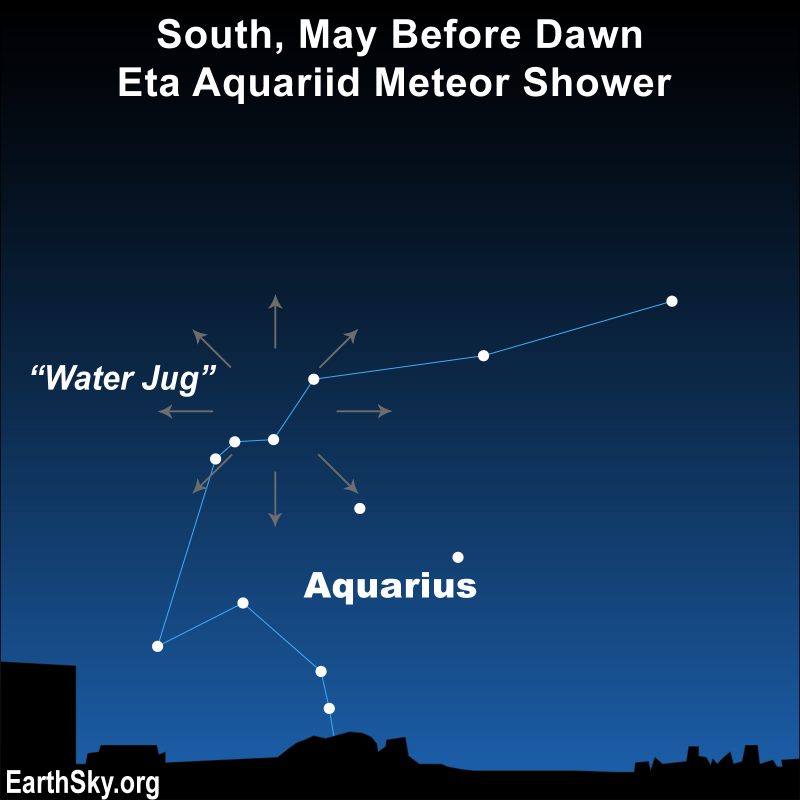Earthsky
1M
89

Image Credit: Earthsky
Meteor shower guide 2025: Next up is the Eta Aquariids
- The Eta Aquariid meteor shower will peak in early May and is best viewed from the Southern Hemisphere, but Northern Hemisphere viewers might also see some meteors.
- The best mornings to watch the Eta Aquariids are on May 5 and 6, 2025, in the hours before dawn, with varying peak times predicted by experts.
- The peak of the Eta Aquariid shower stretches out over several days, leading to elevated meteor numbers a few days before and after the predicted peak time.
- The first quarter moon on May 4 will provide moonless skies in the post-midnight hours for viewing the 2025 Eta Aquariids.
- The Eta Aquariids' radiant point will be near the star Eta Aquarii in the constellation Aquarius, rising in the wee hours and climbing toward its highest point at dawn.
- The Eta Aquariid meteor shower favors latitudes in the southern U.S. or the Southern Hemisphere, where the radiant appears higher in the morning sky.
- The Delta Aquariid meteor shower in late July to mid-August will have a peak predicted for July 30, 2025, and is best viewed from latitudes in the Southern Hemisphere.
- The Delta Aquariids tend to be fainter than Perseid meteors, with a maximum hourly rate of 15 to 20 meteors under ideal moonless conditions.
- The Delta Aquariids' radiant point will be near the star Skat in the constellation Aquarius, with about 5% to 10% of meteors leaving glowing ionized gas trails.
- The Perseid meteor shower in mid-July to mid-August will peak on August 12, 2025, offering potentially 90 meteors per hour under a dark sky with no moon.
- The radiant point for the Perseids is in the constellation Perseus the Hero, with the shower being most intense just before dawn and visible from the Northern Hemisphere.
Read Full Article
5 Likes
For uninterrupted reading, download the app